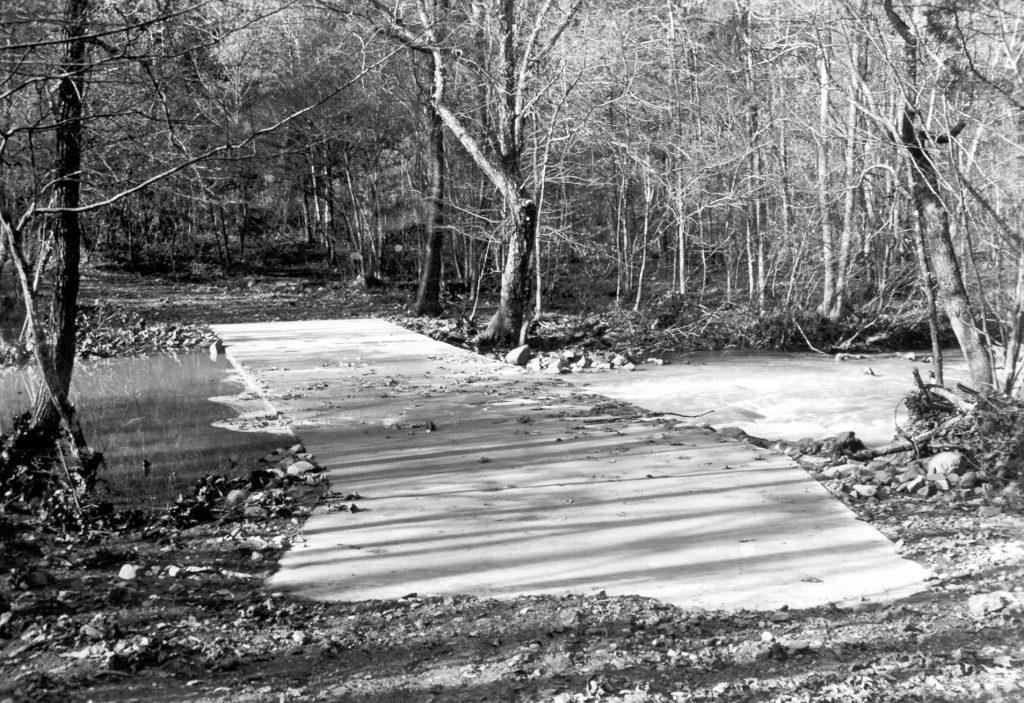This page is in progress, and will be updated with new information about this important project as it continues.
The Office of the Duke Forest — with help from faculty and students at the Nicholas School — endeavors to restore an important section of New Hope Creek and its habitat through the removal and replacement of a well-known bridge installed by the Civilian Conservation Corps in the 1930s and a partial dam further downstream.


For nearly nine decades, the Concrete Bridge allowed vehicles and pedestrians to pass over New Hope Creek while culverts in the bridge conducted its flow. Unfortunately, this success in function caused a series of unintended consequences that continuously disturb the stream ecosystem. High flows overtop the bridge and scour the stream bed and stream banks immediately downstream. Water impounds upstream of the bridge, allowing sediments to blanket the stream bed and alter the water quality. Permanently clogged culverts exacerbate these effects. And while some water does pass through, most aquatic species probably cannot, including the federally threatened Atlantic Pigtoe mussel (Fusconaia masoni) and one of its host species, the Creek Chub (Semotilus atromaculatus).






The new bridge – one that will span the entire creek to allow unimpeded flow and the restoration of the system’s dynamic equilibrium – requires complex engineering and logistics. Called the “Centennial Bridge” as a placeholder because its construction will take place during the University’s 100th anniversary celebrations, it will be available for naming with leadership-level support from a donor. This important restoration project depends on funding from a mix of sources: highly-competitive grants, matches from the Office of the Duke Forest, and importantly, from generous gifts made by conservation-minded donors.
If you are interested in supporting this project, please email restore-nhc@duke.edu.


Wegner Gallery – Field Notes from the Forest
Nicholas School of the Environment, 9 Circuit Dr., Durham, NC
Wegner Gallery, 2nd Floor
To highlight this important project and to ‘bring it home’ to Duke, we have installed a gallery of beautiful photographs at the Nicholas School on campus. The introduction from the gallery walking guide gives a nice summary:
“In this second installment of ‘Field Notes from the Forest,’ we again invite you into the beautiful world of Duke’s biggest and oldest teaching and research laboratory. The photographs of Volunteer Photography Corps member Peter Jeff Nicholls immerse us in the vibrant ecosystem around New Hope Creek in the Duke Forest’s Korstian Division. They compel us to slow down and take notice of our natural surroundings. Perhaps we also see that bridge, a uniquely human structure, and begin to wonder how it might affect the balance.”











